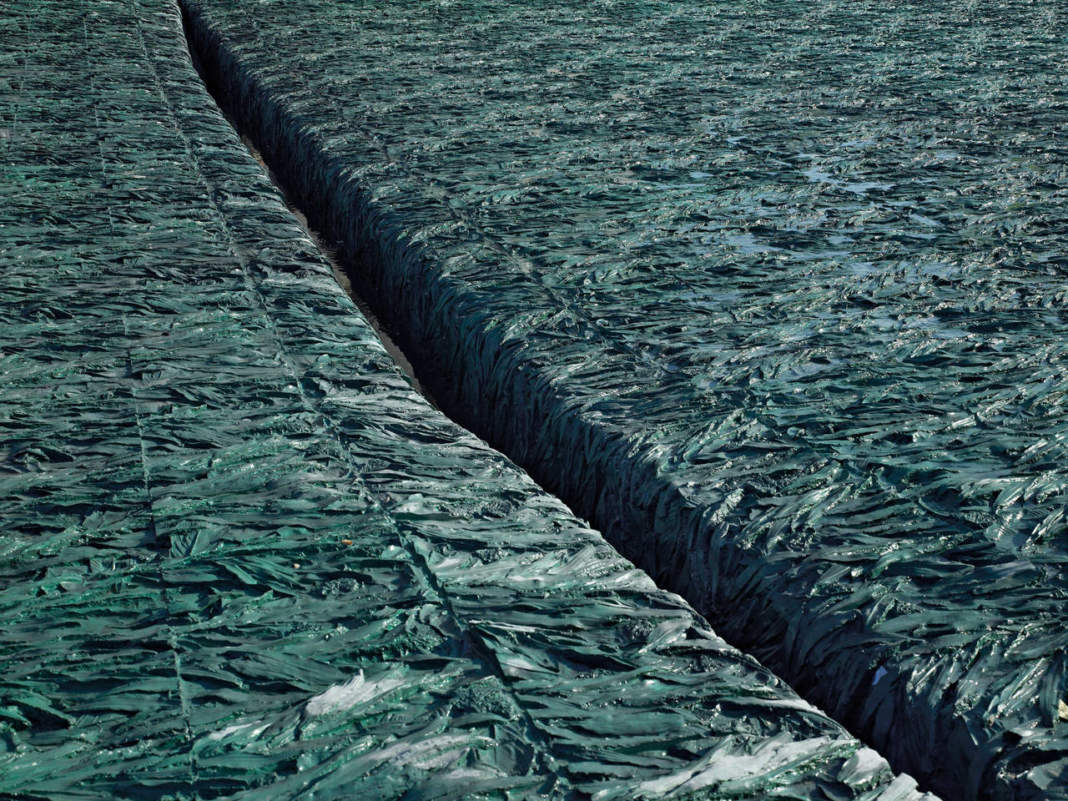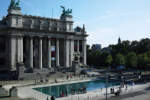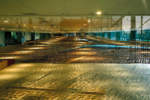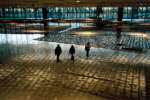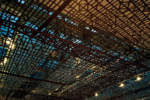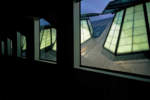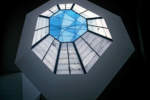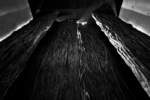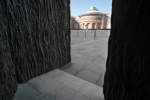architect: Cristina Iglesias
Architectural Sculpture
Cristina Iglesias belongs to a generation of artists who, far from simplified ideological prejudices, has not directly experienced the clear disciplinary separation between art and architecture. On the contrary, her initial formation, marked by the influence of Tony Cragg and Anish Kapoor, for instance, and the subsequent artistic commitment in close contact with important exponents of modern architecture – first and foremost Rafael Moneo – urge her to maintain a fertile “correspondence of senses” with complementary figures, with a view to discovering unconscious rapports between place and object, between experience of the place and use of the object. In this sense, her artistic activity involves emotional, tactile and visual participation, which projects the spectator inside the sculptural installation according to the principle of “dasein” (to reintroduce the heideggerian term of the old dispute between Argan and Brandi), in other words, being inside the work, although outside of it.
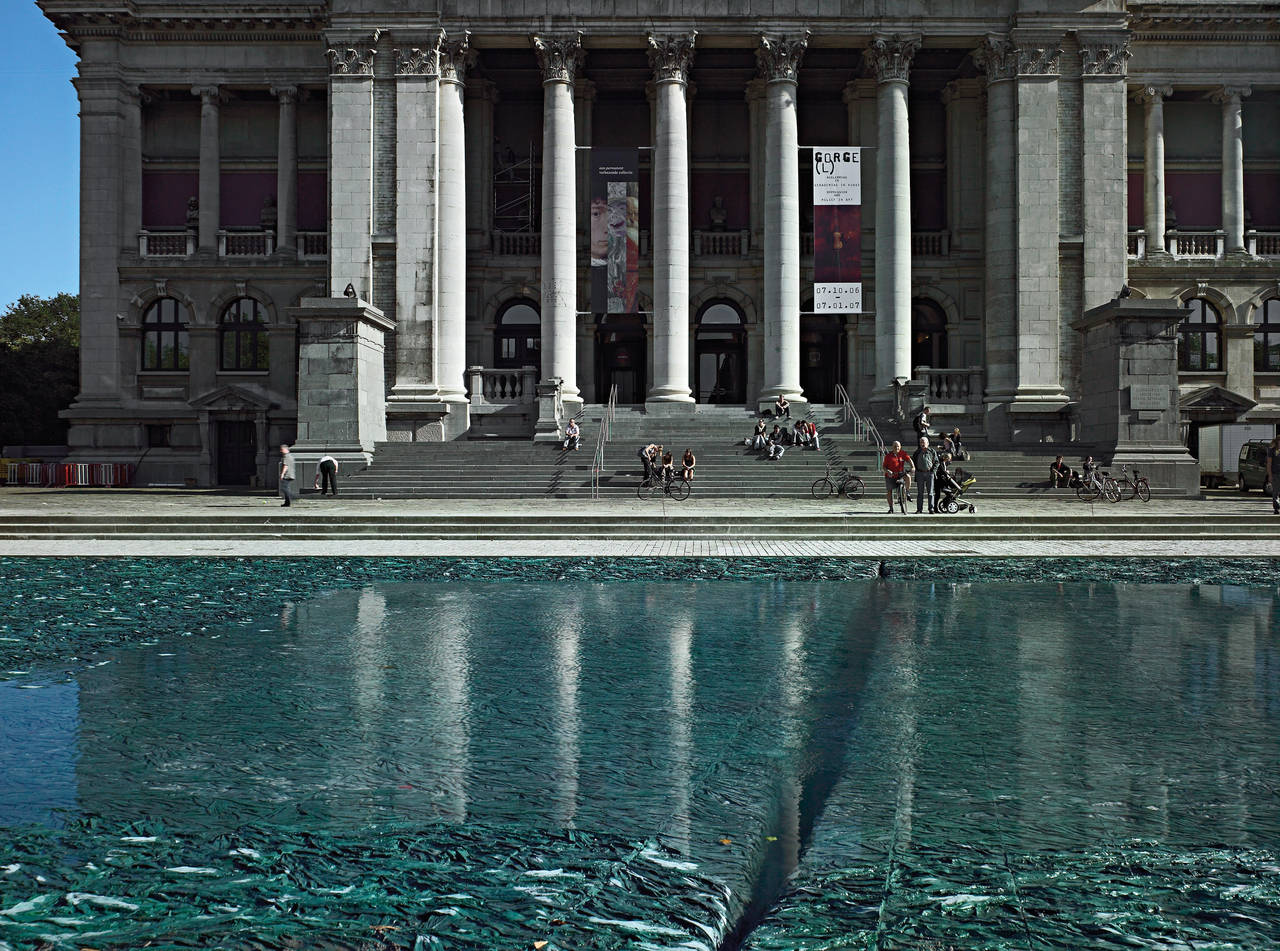
Generally, her artistic works stand out for specific features: firstly, the use of different techniques and heterogeneous materials (fibre glass, resin, bronze powder, alabaster, intertwined wires, steel cables), taken to the limits of a vine branch-like weave, which alternates with the tentacular entanglement of tormented bronze roots; secondly, for the ostentatious rapport between artifice and nature, examined through the refined fusion of distinctive spatial and temporal surroundings; thirdly, for the articulation of pieces arranged and edited in a sequential fashion inspired by cinema: a technique which gives textual value to the sculptural elements, reiterating them in the alternation of light and shade with vague echoes of baroque influence; lastly, for the labyrinth-like, “open” configuration of the large installations, which aerially unfold and expand across the “walls” of the space they occupy, through the dry shading of the material texture.
Among the works which paradigmatically express reciprocal relations with additional artistic languages, of particular interest is the Diepe Fontein, placed in front of the entrance steps to the Koninklijk Museum voor Schone Kunsten (Royal Museum of Fine Arts) in Anverse. This project evolved from the collaboration with Robbrecht & Daem (Flemish architects of Gent who stress the interactive stimuli between art and architecture) for the re-design of the Leopold Waelplaast, in front of the Museum entrance. The work is a 37 x 17-m rectangular fountain, clad with 2,700 tesserae with a bas-relief decoration. The centre of the fountain is carved out by a fissure running perpendicular to the Museum’s main façade, from which the water spouts. The source gradually fills the basin and reproduces the mirror image of the façade’s colonnade. Once completely filled, the water flows back into the fissure with a pendular rhythm of filling and emptying, renewing the metaphorical sense of returning to the origin and of the perennial vital cycle.
The same mercurial inertia of the material filament reappears in a different theme of the bronze panel of the new building for the extension of Rafael Moneo’s Prado. In this example, the entrance portal assumes the form of a gigantic tendril weave, in whose scratches emerges the venous system of a dense vegetable mesh, which envelops the thickness of the opening. The latter, once closed, reproduces the initial figurative nucleus according to the mechanisms of a perpetual rapport. What results from a rapid analysis of the works is suffice to underline the artist’s continuous refinement in her collaboration with the architect, as displayed in the “suspended ceiling” inside the atrium of Josep Lluìs Mateo’s Congress Centre in Barcelona (Forum 2004). In this case, as in the corridors suspended in improbable maze-like horizons, the pieces of hemp cloth intertwine in ideographic writing, causing the onlooker’s vision to be somewhat fractioned. To participate in these dynamics is the wealth of ropes, wires and steel cables interwoven in the memory of a disconnected enclosure. Cristina Iglesias’ work therefore suggests the idea of a sculpture which does not exhaust itself in the simple circumnavigation of the work, but which is conveyed in accordance with our existence in perspective with the place, the space and elapsing of time.
Cristina Iglesias (San Sebastian 1956) is part of a generation of artists who in the late ‘80s, early ‘90 led the expansion of sculptural object into the new realm of installation. In contrast to her predecessors ‘modernists‘, Iglesias, whose work is primarily figurative, often evokes the female body in relationship with everyday objects such as furniture, rooms and architecture.
The first exhibition of Cristina Iglesias date back to the eighties and since then many are her personal exhibitions: Museum Ludwig, Colonia (2006); Whitechapel Art Gallery, London (2003); Museu Serralves, Oporto (2002); Museo Guggenheim, Bilbao (1998); Palacio de Velázquez / Museo Nacional Centro de Arte Reina Sofía, Madrid (1998); Guggenheim Museum, New York (1997); One Room, Stedelijk van Abbemuseum, Eindhoven (1993) and Kunsthalle, Berna (1991).


